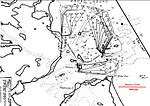Long Island (Massachusetts)

Long Island is located in Boston Harbor, Massachusetts. The island is part of the City of Boston, and of the Boston Harbor Islands National Recreation Area. The island is 1.75 miles (2.82 km) long and covers 225 acres (0.9 km2). Prior to October 2014, access to the island was via a road over a 4,175-foot (1,273 m) causeway from the Squantum peninsula of North Quincy to Moon Island, and from there, over a 3,050-foot (930 m) two-lane steel bridge – officially named the Long Island Viaduct – from Moon Island to Long Island. Access to the causeway leading to Moon Island and Long Island was controlled by police at a guardhouse at its southern end, and permission needed to be obtained in advance since it is a restricted area. In October 2014, all access to Long Island was cut off for the indefinite future by then Mayor of Boston, Marty Walsh, based on the warning of the Massachusetts Department of Transportation that the bridge was unsafe. All those living on Long Island and being serviced by recovery programs or who were guests in the homeless shelter were no longer able to get there. They were abruptly relocated elsewhere on an emergency basis. The bridge to Long Island was demolished on March 23, 2015. The future uses of the island and its buildings are still under discussion.
Excerpt from the Wikipedia article Long Island (Massachusetts) (License: CC BY-SA 3.0, Authors, Images).Long Island (Massachusetts)
Long Island Road, Boston
Geographical coordinates (GPS) Address Nearby Places Show on map
Geographical coordinates (GPS)
| Latitude | Longitude |
|---|---|
| N 42.320833333333 ° | E -70.966666666667 ° |
Address
Long Island Road
Long Island Road
Boston
Massachusetts, United States
Open on Google Maps









